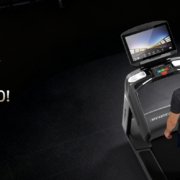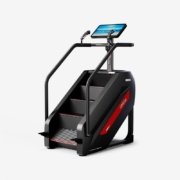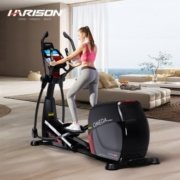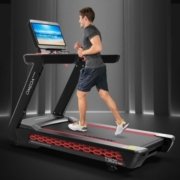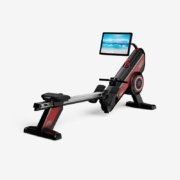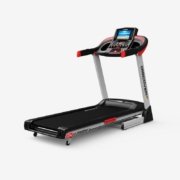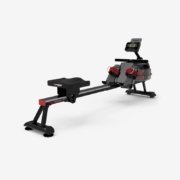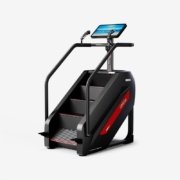Posts
Can You Safely Use a Stair Climber During Pregnancy?
/0 Comments/in Blog, Exercise Equipment, HOT NEWS, NEWSCan You Safely Use a Stair Climber During Pregnancy?
Staying active during pregnancy offers numerous benefits. Many expectant mothers wonder if using a stair machine gym is a safe option. This article explores the safety and benefits of using stairs climbers while pregnant, with a focus on the HARISON stair climber.
Is It Safe to Use a Stair Climber When Pregnant?
For most women with uncomplicated pregnancies, moderate exercise on a stair machine gym is generally safe. Always consult your healthcare provider first. Using a stable machine like the HARISON stair climber can be a suitable and controlled way to stay active.
Benefits of Stair Climber Workouts
A stair machine workout provides excellent low-impact cardiovascular exercise. It can help manage weight, boost mood, and maintain muscle strength. The HARISON Stepper Exercise Machine effectively targets major muscle groups, which can support your body throughout pregnancy.
Why the HARISON Stair Climber is a Good Choice
The HARISON stair climber is ideal for prenatal fitness. Its sturdy steel frame ensures stability, while the near-silent hydraulic system allows for peaceful workouts. The included LCD display helps you monitor your effort, and as it arrives 100% pre-assembled, you can start your stair machine workout immediately and safely.
Key Precautions for Your Workout
Safety is paramount. Maintain a moderate intensity, stay hydrated, and listen to your body. Stop if you feel any discomfort. The stability and controlled motion of the HARISON stair climber help minimize risk during your stair machine workout.
Convenience of Home Exercise
The compact HARISON Mini Exercise Stepper fits easily into any home. Its space-saving design and portability make it simple to get a safe and effective workout at home, anytime.
Conclusion
Using a stair climber like the HARISON stair climber can be a safe and effective way to maintain fitness during pregnancy, provided you have medical approval and exercise with care. Its home-friendly design offers a convenient path to staying active.
People Also Ask
What intensity of stair machine workout is safe during pregnancy?
A moderate intensity where you can comfortably hold a conversation is generally recommended. Always consult your doctor for personalized advice.
Can using a HARISON stair climber help with back pain during pregnancy?
Yes, the low-impact motion can help strengthen your core and back muscles, potentially alleviating some pregnancy-related back discomfort.
Are there any features of the HARISON stepper that are particularly beneficial for pregnant women?
Yes, its stability, smooth and quiet operation, LCD display for monitoring effort, and compact size for easy home use are all beneficial features.
Is the HARISON stepper suitable for all trimesters?
This depends on your individual health and fitness level. While it may be suitable in the first and second trimesters for some, balance often becomes a concern later in pregnancy. Always follow your doctor’s guidance.
How does the HARISON stair climber ensure stability during a workout?
The HARISON Stepper is built with a sturdy, commercial-grade steel frame and a wide base, providing exceptional stability and a high weight capacity for secure workouts.
How High Should Your Exercise Bike Seat Be? HARISON fitness equipment
/0 Comments/in Blog, Exercise Equipment, HOT NEWS, NEWSHow High Should Your Exercise Bike Seat Be? HARISON fitness equipment
Setting the correct seat height on your exercise bike is essential for comfort, efficiency, and injury prevention. Whether you use a recumbent bike, an upright model, or a HARISON Exercise Bike, proper adjustment maximizes your workout benefits. This guide explains how to set your seat correctly and highlights the features of HARISON workout bikes.
Why Correct Seat Height Matters
The right seat height ensures optimal performance and prevents strain. A seat that is too low stresses knees and hips, while one that is too high can cause hip rocking and reduce power. For HARISON Exercise Bike models, correct adjustment enhances their low-impact design for a safer, more effective session.
Finding the Perfect Seat Height
Use the “heel-to-pedal” test: Sit on the bike and place your heel on the lowest pedal. Your leg should be straight without locking the knee. When pedaling with the ball of your foot, a slight knee bend should remain. This applies to both recumbent and upright exercise bikes.
Adjusting a Recumbent Bike Seat
On a recumbent exercise bike like the HARISON HR-B12, adjust the seat distance so you can reach pedals with a slight knee bend at full extension. The padded seat and backrest offer lumbar support, ensuring comfort for adults and seniors.
Adjusting an Upright Bike Seat
For an upright bike, set the height for a slight knee bend at the pedal’s lowest point. Also, check handlebar height for a neutral spine. HARISON indoor exercise bikes feature therapist-approved, adjustable seats to fit all body types and support proper posture.
Benefits of a Well-Adjusted HARISON Bike
HARISON offers commercial elliptical trainers quality for home use. With a sturdy frame, lifetime support, and easy setup, it’s built to help you lose weight safely and effectively. It’s a smart investment for anyone serious about fitness.
Conclusion
Adjusting your exercise bike seat correctly is a simple but vital step for an effective workout. Whether using a recumbent or upright bike, following these guidelines improves your routine. HARISON top workout bikes are designed for comfort and performance, helping you achieve fitness goals safely at home.
People Also Ask
What happens if my exercise bike seat is too low?
A low seat increases stress on knees and hips, leading to discomfort and potential injury. It also reduces pedaling efficiency.
How do I know if my seat height is correct?
Perform the “heel-to-pedal” test. With your heel on the bottom pedal, your leg should be straight. When cycling normally, a slight knee bend should be present.
Does seat adjustment differ for recumbent and upright bikes?
Yes. Recumbent bikes focus on seat distance and backrest angle. Upright bikes primarily adjust seat height and fore/aft position.
Are HARISON exercise bikes suitable for seniors?
Absolutely. HARISON recumbent bikes for seniors feature cushioned seats, lumbar support, and low-impact operation for safety and comfort.
What makes HARISON a top home exercise bike brand?
HARISON bikes are known for magnetic resistance, LCD displays, adjustable seats, and therapist-approved designs, offering a premium home workout experience.
Should Your Treadmill Belt Be Tight? A Professional Guide
/0 Comments/in Blog, Exercise Equipment, HOT NEWS, NEWSShould Your Treadmill Belt Be Tight? A Professional Guide
A common question among treadmill users is: should the treadmill belt be tight? Proper belt tension is crucial for performance, safety, and the longevity of your machine. In this guide, we’ll explore the ideal tension, how to adjust it, and why it matters for your fitness routine.
Why Proper Belt Tension is Crucial
Correct treadmill belt tension prevents slipping and reduces motor strain. A tight belt ensures smooth operation, while a loose one can cause wear and safety issues. For a professional treadmill like HARISON, proper tension is key to durability and a safe workout.
How to Check Belt Tension Easily
Turn off the treadmill and press the belt midpoint. It should lift about 2–3 inches. If too tight or loose, adjust it promptly. HARISON treadmills allow quick checks, helping maintain your HARISON treadmill with minimal effort.
Simple Steps to Adjust the Belt
Locate the rear adjustment bolts. Turn clockwise to tighten, counterclockwise to loosen. Test after each small turn. The best treadmill models, like HARISON, include tools for easy DIY maintenance.
Benefits of a Well-Maintained Treadmill Belt
A properly tensioned belt ensures smooth operation, reduces motor load, and enhances safety. It also improves the accuracy of speed and incline settings. With a gym treadmill such as HARISON, you can enjoy a reliable and efficient workout every time. Regular maintenance, including belt checks, helps you get the most out of your investment.
Why Choose HARISON Treadmills for Home Use
HARISON offers powerful, user-friendly treadmills like the Home Treadmill with Silent Brushless Motor. It’s 95% pre-assembled, includes the HARISON Fitness App, and offers immersive sound—making it a top rated commercial treadmill for home use.
Conclusion
Proper treadmill belt tension is key to a safe, efficient, and long-lasting machine. Regular checks and adjustments can prevent issues and enhance your workout quality. HARISON treadmills, known for their professional build and advanced features, make maintenance simple and workouts enjoyable. Invest in a top rated commercial treadmill like HARISON for a reliable fitness partner.
People Also Ask
How often should I check my treadmill belt tension?
It’s recommended to check the tension every 1-2 months, depending on usage. For frequent users, monthly checks are ideal.
Can I adjust the belt tension myself?
Yes, most treadmills, including HARISON models, come with tools and instructions for easy adjustment.
What happens if the belt is too loose?
A loose belt can slip, cause uneven wear, and reduce workout efficiency. It may also strain the motor over time.
Is HARISON treadmill suitable for high-intensity training?
Absolutely. The HARISON Home Treadmill supports speeds up to 16KM/H and is designed for both jogging and intense workouts.
Does HARISON offer assembly support?
HARISON treadmills are 95% pre-assembled for quick setup. Detailed guides and customer support are also available.
Do Rowing Machines Have Resistance? A Complete Guide
/0 Comments/in Blog, Exercise Equipment, HOT NEWS, NEWSDo Rowing Machines Have Resistance? A Complete Guide
Yes, rowing machines have resistance – it’s the core feature that makes them effective for fitness. This force mimics the feel of water and dictates your workout intensity. Understanding how it works helps you choose the right machine, whether you’re a beginner or a pro.
How Rowing Machine Resistance Works
Resistance is the force your muscles work against with each stroke. It engages your cardiovascular system and muscles, driving calorie burn. A quality fitness rowing machine provides smooth, adjustable resistance for everything from light cardio to intense strength sessions.
Types of Rowing Machine Resistance
Common types include magnetic, air, water, and hydraulic. Magnetic resistance, used in HARISON rowing machine models, employs magnets for quiet, consistent drag. Air resistance intensifies with your effort, while water mimics real rowing. Hydraulic is compact but often less smooth.
HARISON’s Magnetic Resistance System
The HARISON rower features a US Mute Magnetic System with 16 adjustable levels. Levels 1-5 suit aerobic training, 6-10 boost calorie burn, and 11-16 build full-body strength. This makes HARISON a professional rowing machine adaptable to various fitness goals.
Choosing the Correct Resistance Level
Match resistance to your goal: moderate for fat burning, higher for strength. Using the right setting on a good rowing machine ensures effectiveness and safety. HARISON’s clear level guidelines help you optimize every workout.
Tracking Workouts with HARISON
Sync with the Free HARISON APP or Kinomap for guided sessions and virtual routes. The LCD screen shows time, distance, calories, and more. This data helps you see how resistance affects results, turning the HARISON into a smart gym rowing machine.
Why Resistance Matters for Results
Proper resistance challenges your body without risking injury. Consistent use of a fitness rowing machine like HARISON improves muscle tone, heart health, and stamina. Correct settings make every session count toward your goals.
Conclusion
Resistance is essential to rowing machines, offering customizable full-body workouts. The HARISON rowing machine, with its magnetic system, app connectivity, and performance tracking, delivers a professional rowing machine experience at home, helping you train effectively and efficiently.
People Also Ask
What are the main types of resistance in rowing machines?
The four primary types are magnetic, air, water, and hydraulic. HARISON uses magnetic resistance for smooth, quiet operation.
How many resistance levels do I need?
8-16 levels are ideal for most users. HARISON offers 16 magnetic resistance levels for versatile workouts.
Is a magnetic rowing machine good for building muscle?
Yes. Higher resistance levels (11-16 on HARISON) target full-body muscle strengthening effectively.
How do I track my workout on a HARISON rowing machine?
Use the LCD display or sync with the Free HARISON APP to monitor time, distance, calories, speed, and more.
Is the HARISON rowing machine difficult to assemble?
No. It arrives 90% pre-assembled and can be ready in about 20 minutes for immediate use.
How Elliptical Helps in Weight Loss: A Complete Guide
/0 Comments/in Blog, Exercise Equipment, HOT NEWS, NEWSHow Elliptical Helps in Weight Loss: A Complete Guide
Elliptical trainers are among the most popular fitness machines for weight loss. They offer a full-body, low-impact workout that burns calories efficiently. In this guide, we’ll explore how using an elliptical can help you shed pounds and highlight why the HARISON elliptical stands out as a top choice.
Why Elliptical Machines Are Effective for Weight Loss
Elliptical workouts combine upper and lower body movement, leading to higher calorie burn. This low-impact exercise is sustainable and safe, making it easier to stay consistent. Regular use of an elliptical machine workout can boost metabolism and accelerate fat loss.
Key Features of the HARISON Elliptical for Weight Loss
The HARISON elliptical includes 16 resistance levels, a calorie-tracking monitor, and ergonomic design. It supports users up to 350 lbs, making it one of the best elliptical options for home use. These features help customize your workout for maximum weight loss results.
Maximizing Calorie Burn with Interval Training
One of the most effective ways to lose weight on an elliptical is through interval training. Alternate between high and low resistance to keep your heart rate up and increase calorie burn. The HARISON elliptical makes this easy with its 16 resistance settings. For example, use levels 11–16 for intense bursts and levels 5–10 for recovery. This method can help you burn more calories in less time.
Low-Impact, High Results
Unlike running, ellipticals reduce joint strain while providing an efficient cardio session. This makes the HARISON elliptical ideal for all fitness levels, especially those with joint concerns or those looking for long-term, sustainable exercise.
Why Choose a HARISON Elliptical Trainer?
HARISON offers commercial elliptical trainers quality for home use. With a sturdy frame, lifetime support, and easy setup, it’s built to help you lose weight safely and effectively. It’s a smart investment for anyone serious about fitness.
Conclusion
Using an elliptical machine is an efficient and joint-friendly way to lose weight. With features like adjustable resistance, calorie tracking, and low-impact motion, the HARISON elliptical offers everything you need to reach your fitness goals. Start your weight loss journey today with a machine designed to support your success.、
People Also Ask
How often should I use the elliptical to lose weight?
For best results, aim for 3–5 sessions per week, each lasting 30–45 minutes. Combine with a balanced diet for optimal weight loss.
Is the HARISON elliptical suitable for beginners?
Yes. With 16 resistance levels and an easy-to-use monitor, it’s perfect for all fitness levels.
Can I track my heart rate on the HARISON elliptical?
Yes. The machine includes pulse sensors on the handlebars to monitor your heart rate in real time.
How does the HARISON elliptical compare to gym ellipticals?
HARISON ellipticals are built with commercial-grade durability and smooth motion, making them just as effective as gym elliptical machine options.
Does the elliptical help tone muscles?
Yes. By working both your upper and lower body, the elliptical can help tone legs, glutes, arms, and core over time.
🎁 HARISON Thanksgiving Giveaway – A Special Gift of Gratitude!
/0 Comments/in Blog, HOT NEWS, NEWS🎁 HARISON Thanksgiving Giveaway – A Special Gift of Gratitude!
Thanksgiving is just around the corner — and at HARISON, we’re feeling extra thankful for all the fitness lovers who’ve supported us year after year. To show our appreciation, we’re giving back in a big way with an exclusive Thanksgiving Giveaway!
Starting November 17, 2025, we’ll be offering select HARISON fitness products absolutely FREE — yes, you read that right! Whether you’re just beginning your fitness journey or looking to upgrade your home gym, this is your chance to bring home professional-grade equipment at zero cost.
🎉 But hurry — spots are limited!
Once the giveaway quota is reached, the event will close immediately. It’s first come, first served, so don’t wait to claim your gift!
💪 How to Join:
Simply reach out to our team and let us know you’re ready to claim your free HARISON product.
📩 Email us at: service@harisonfitness.com
Our customer service team will respond quickly with all the details on how to participate and redeem your free item.
This Thanksgiving, HARISON wants to share the gift of health, strength, and happiness with you. Because nothing says “thank you” better than helping you stay active, motivated, and strong — every single day.
Don’t miss your chance to join this limited-time event. Act now and celebrate this Thanksgiving with a fitness gift from HARISON — made just for you!
✨ Limited Time. Limited Quantity. Unlimited Gratitude. ✨
Do Treadmills Have Weight Limits? Here’s the Real Answer
/0 Comments/in Blog, Exercise Equipment, HOT NEWS, NEWSIf you’re shopping for a treadmill, one of the most important — and most overlooked — details is the weight limit. Many people assume that all treadmills can handle any body type, but that’s far from true. Just like cars and furniture, treadmills have a maximum weight capacity designed to protect both the user and the machine.
Understanding how those limits work can save you from wasted money, poor performance, or even injury. Let’s break it down.
Why Treadmill Weight Limits Matter
Every treadmill is built with a specific motor, frame, and belt design that determines how much weight it can safely support. The treadmill weight limit isn’t just about comfort — it’s about performance and longevity.
If you exceed the recommended capacity, the motor may strain, the belt can slip, and the deck might wear down faster. In some cases, the treadmill could even shut off mid-run as a safety precaution.
Manufacturers test their machines extensively to find the optimal weight threshold — not to exclude users, but to make sure each model performs smoothly for years.
Typical Weight Limits Across Different Treadmill Types
Not all treadmills are built the same, and their weight limits vary based on category:
Compact or folding treadmills: Usually support around 220–250 lbs. Ideal for light to moderate walking and home use.
Mid-range treadmills: Handle 250–300 lbs, offering a solid balance of durability and power.
Commercial treadmills: Can manage 350–450 lbs, built for gyms and heavy daily use.
The HARISON T101ECO treadmill, for instance, supports up to 280 lbs — a strong capacity for a home-use model that prioritizes safety and stability.
How to Choose the Right Weight Limit for You
When selecting a treadmill for heavy users, don’t just match your exact body weight. You should aim for a treadmill rated for at least 20% more than your current weight. This extra buffer helps the motor run efficiently and extends the life of the belt and deck.
For example:
If you weigh 200 lbs, go for a treadmill with a 240–250 lb limit.
If you weigh 250 lbs, choose one rated 300 lbs or above.
This gives your treadmill breathing room — it won’t be constantly operating at maximum load.
What Determines a Treadmill’s Weight Capacity
A treadmill’s weight capacity depends on a few key design factors:
Motor Power: Stronger motors (measured in continuous horsepower) handle heavier loads with less strain.
Frame Construction: Steel frames support more weight than aluminum or plastic ones.
Deck Thickness: Thicker decks absorb more impact, reducing stress on both your joints and the treadmill.
Belt Quality: Wider, multi-layered belts tend to last longer under pressure.
The HARISON treadmill lineup combines all four — with reinforced frames, quiet motors, and anti-slip belts to ensure durability even during long sessions.
Can You Use a Treadmill Above Its Weight Limit?
Technically, you can — but it’s not a good idea. Exceeding the treadmill weight limit won’t cause it to collapse immediately, but it does accelerate wear and tear. Over time, you’ll notice:
The belt slows down or jerks unexpectedly.
The motor overheats.
The deck starts to squeak or feel unstable.
Eventually, the treadmill may shut off completely or require costly repairs. It’s always safer (and cheaper) to buy a treadmill rated for your weight from the start.
Signs You’re Using a Treadmill Near Its Limit
If you already own a treadmill, here are a few signs you might be approaching its capacity:
You hear unusual grinding or clicking noises.
The belt feels sluggish or unsteady.
The treadmill speed fluctuates during use.
You notice a faint burning smell from the motor area.
These are red flags — and good reasons to upgrade to a sturdier model designed for heavier users.
Treadmills for Heavy Users: What to Look For
When buying a treadmill that can handle more weight, check for:
Motor Power: At least 3.0 CHP for reliable performance.
Sturdy Frame: Preferably steel with shock absorption.
Extra Cushioning: Reduces joint stress during long walks or runs.
Wide Running Belt: Offers more stability and comfort.
The HARISON commercial-grade treadmill series checks all these boxes — durable, smooth, and engineered to maintain consistent performance, no matter the user’s size.
The Bottom Line: Safety and Durability First
So, do treadmills have weight limits? Yes — and for good reason. They’re not restrictions; they’re protections for both you and your investment.
By choosing the right model with the right capacity, you’ll enjoy smoother performance, quieter operation, and a treadmill that lasts for years. Whether you’re walking for wellness or training for endurance, HARISON treadmills offer the balance of strength, safety, and comfort you can rely on daily.
People Also Ask
How do I find a treadmill’s weight limit?
Check the product manual, frame label, or manufacturer’s website. Most list the maximum user weight clearly in specs.
What happens if I exceed the treadmill’s weight limit?
It may still run, but the motor, belt, and deck will wear out faster — reducing lifespan and increasing maintenance costs.
Are folding treadmills safe for heavier users?
Some are, but check the specs carefully. Models like the HARISON T101ECO offer sturdy, compact designs with higher-than-average capacity.
What’s the best treadmill for heavy users?
Look for steel frames, strong motors (3.0 CHP or more), and weight limits above 300 lbs. HARISON commercial treadmills are built with these in mind.
Does a higher weight limit mean a better treadmill?
Not always — but it often signals better build quality, stronger materials, and smoother performance under load.
Is a Rowing Machine Hard on Your Back? A Practical Look for Everyday Users
/0 Comments/in Blog, Exercise Equipment, HOT NEWS, NEWSThe Truth About Rowing and Back Pain
If you’ve ever looked at someone rowing in the gym and thought, “That’s gotta hurt their back,” you’re not alone. Many beginners assume that a rowing machine is tough on the spine — but in reality, rowing can actually strengthen your back when done correctly.
The key is in your form, not the machine itself. A rowing workout uses a smooth, controlled pulling motion that engages your core, legs, and upper body all at once. When performed with good posture, it promotes spinal alignment and builds muscles that protect your back from strain.
How the Rowing Motion Affects Your Back
Every stroke on a rowing machine has four main phases — catch, drive, finish, and recovery. Your back plays a supporting role in each:
Catch: You lean slightly forward from your hips, keeping your spine neutral.
Drive: You push with your legs first, then pull with your arms, engaging your lats and core.
Finish: Your torso leans back just slightly — not slouches — to complete the motion.
Recovery: You move smoothly back to the starting position.
When done right, these phases build strength across the lower back, lats, and core. But when rushed or done with poor posture, they can cause strain. So it’s not that rowing hurts your back — it’s that bad technique can.
Why Proper Form Protects Your Spine
Your back muscles are designed to stabilize your body — not do all the pulling. The power of a row should start from your legs, travel through your core, and finish with your arms. If you rely too much on your lower back, that’s when issues arise.
Here’s how to protect yourself:
Sit tall with your chest up and shoulders relaxed.
Keep your abs tight — your core is your armor.
Drive with your legs first, not your back.
Don’t overextend or lean too far at the end of the stroke.
By keeping your motion fluid and your spine straight, rowing becomes one of the best full-body workouts you can do — and one of the safest for your back.
Benefits of Rowing for Back Health
Ironically, many people who start rowing to get in shape find their back pain improves over time. That’s because the rowing motion strengthens deep stabilizing muscles — the kind you can’t easily target with traditional weight machines.
Benefits include:
Better posture: Stronger core and spinal muscles mean less slouching.
Reduced tension: Controlled movement increases blood flow to the back.
Balanced strength: Rowing works the front and back of your body equally, reducing muscle imbalances.
When used consistently, a rowing machine can actually prevent back issues rather than cause them.
Choosing the Right Machine for a Safe Rowing Experience
Not all rowers are built the same. A well-designed machine supports natural movement and minimizes strain on the joints and back.
The HARISON Magnetic Rowing Machine offers a smooth glide system, ergonomic seat, and adjustable resistance levels — all designed with spinal safety and comfort in mind. Its frame stability keeps you grounded, while the quiet magnetic drive helps maintain consistent rhythm without jerking or bouncing.
For home users, it’s a smart choice if you want an efficient, back-friendly cardio and strength workout in one machine.
When to Be Careful
While rowing is generally safe, there are situations where caution helps:
If you already have a back injury, consult your doctor or physical therapist first.
Avoid jerky or rushed strokes; they can compress the lower spine.
Warm up before rowing — tight hamstrings and hips can pull your posture out of alignment.
Start slow: Build endurance before adding heavy resistance or longer sessions.
Remember — rowing is a technique-based exercise. Once you master the rhythm, your back will thank you.
Why Rowing Is Worth the Effort
If you’ve avoided the rowing machine out of fear it’s tough on your back, it’s time to reconsider. Few workouts deliver such a powerful mix of cardio, strength, and posture training in one motion. It’s joint-friendly, time-efficient, and incredibly effective for total-body conditioning.
And with advanced models like HARISON’s rowers, you can enjoy the benefits of professional rowing from the comfort of your home — safely, smoothly, and without sacrificing your back health.
Conclusion: Row Smart, Not Hard
So, is the rowing machine hard on your back? Only if your form is. With the right setup, posture, and rhythm, rowing is one of the most spine-friendly, low-impact workouts available.
It strengthens your back instead of hurting it, tones your entire body, and boosts your heart health — all while sitting down. With HARISON’s ergonomic design and smooth resistance system, you’ll feel the difference after just a few sessions.
Train smart, move strong, and let every stroke make your back more resilient.
People Also Ask
Can a rowing machine help with existing back pain?
Yes — when used correctly, rowing strengthens the muscles that support your spine. But consult a doctor if your pain is chronic.
Is rowing better for the back than running?
Absolutely. Rowing is low-impact and places far less stress on the spine and joints than running.
How can I avoid back strain while rowing?
Focus on driving with your legs, tightening your core, and keeping your spine neutral throughout the movement.
What’s the best rowing machine for home use?
The HARISON Magnetic Rowing Machine is an excellent option for home gyms — smooth, quiet, and ergonomically designed for back comfort.
Can beginners use a rowing machine safely?
Definitely. Start at a moderate resistance and focus on proper form. Most people find rowing easy to learn and highly effective after a few sessions.
What Muscles Does the Stair Climber Work? A Complete Guide
/0 Comments/in Blog, Exercise Equipment, HOT NEWS, NEWSWhy the Stair Climber Deserves More Attention
If you’ve ever walked past a stair climber at the gym and thought it looked too simple to make a difference — think again. This underrated machine packs one of the most powerful lower-body workouts you can get.
The climbing motion targets nearly every major leg muscle, while also improving endurance, balance, and posture. Whether you’re training for strength or looking to sculpt lean, toned legs, the stair stepper is a secret weapon worth adding to your routine.
The Main Muscles Worked on a Stair Climber
The beauty of a stair climber workout lies in how it mimics natural stair climbing — something your body already knows how to do. But when done consistently and at higher intensity, it engages a wide range of muscles in the lower body and beyond:
Glutes (Buttocks): Every step requires hip extension, which activates your glutes — especially when you push through your heels.
Quadriceps (Front Thighs): These power your upward motion and help stabilize your knees.
Hamstrings (Back of Thighs): Work in sync with your glutes to pull your body upward.
Calves: Each lift and press tones and strengthens the lower legs.
Core Muscles: Your abs and lower back work hard to keep you upright and balanced throughout the movement.
This combination makes the stair climber one of the best machines for lower-body power and total stability.
Why It’s More Than Just a Leg Workout
Although the stair stepper primarily strengthens your legs, it also has surprising full-body benefits. Maintaining balance engages your core and spinal stabilizers, while your upper body gets a mild workout from keeping posture and rhythm.
Unlike running or jumping workouts, stair climbing is low-impact, meaning it’s easier on your joints while still elevating your heart rate. That makes it an excellent choice for people of all fitness levels — from beginners to athletes recovering from high-impact training.
How to Maximize Muscle Engagement
Getting the most out of your stair climber comes down to technique. Here are a few insider tips:
Don’t lean on the rails: Keep your hands light for balance, not support. This forces your legs and core to do the work.
Push through your heels: This ensures your glutes and hamstrings stay fully engaged.
Keep your chest up: Good posture activates your abs and prevents back strain.
Vary your pace: Alternate between steady climbing and short, faster bursts to challenge different muscle fibers.
When used correctly, the stair stepper becomes a total-body sculpting tool — not just a cardio machine.
How the HARISON Stair Climber Takes It Further
The HARISON HR-349 Stair Climber is designed to combine intensity with joint-friendly movement. It features a smooth stepping mechanism and ergonomic handles that encourage natural body alignment — so your form stays correct while your leg muscles get a complete workout.
Unlike many standard steppers, HARISON’s resistance system lets you adjust intensity levels gradually, allowing beginners to build confidence and advanced users to push harder without stressing their joints.
Whether your goal is strength, endurance, or fat burning, HARISON’s innovative design ensures that every climb counts — safely and efficiently.
Key Benefits Beyond Muscle Building
Regular stair climbing doesn’t just shape your legs — it transforms your overall fitness. Some added benefits include:
Better posture and balance through stronger core engagement.
Higher calorie burn compared to walking or cycling at the same effort level.
Increased cardiovascular strength, helping your heart and lungs work more efficiently.
Enhanced lower-body endurance, perfect for sports or daily activities that require stamina.
In short, a stair climber workout helps you move better, feel stronger, and look fitter — without pounding your joints.
Conclusion: Strong Legs, Stronger You
So, what muscles does the stair climber work? Pretty much all of them from the waist down — plus your core. From your glutes to your calves, it’s a powerhouse machine for strength, stability, and endurance.
If you’re looking for a smarter way to tone your legs and boost cardiovascular fitness, the HARISON Stair Climber offers everything you need. It’s compact, smooth, and engineered to bring professional-quality training right into your home gym.
Climb stronger. Move better. Feel unstoppable.
People Also Ask
Does the stair climber build muscle or just tone?
Both. The resistance helps you build lean muscle, while the repetitive motion tones and strengthens your legs.
Is the stair stepper good for your knees?
Yes — it’s low-impact and easier on joints than running, especially if you maintain proper form.
How long should I use the stair climber for results?
Start with 15–20 minutes, 3–4 times per week, and increase as your stamina improves.
Which is better — a stair climber or treadmill?
The stair climber focuses more on muscle strengthening, while the treadmill targets endurance and calorie burn. Both can complement each other.
Does HARISON make home stair climbers?
Absolutely. The HARISON HR-349 Stair Climber is built for both home and commercial use, offering smooth resistance and durable design.
Join Harison Family and get access to exclusive offers & fitness tips.
- +1(800)865-2125
- 5:30 AM-8:00 PM PST
- service@harisonfitness.com
- 532 S Hicks Rd, Palatine IL 60067 USA (Google Maps Navigation Address:532 S Hicks Rd, Rolling Meadows, IL)

